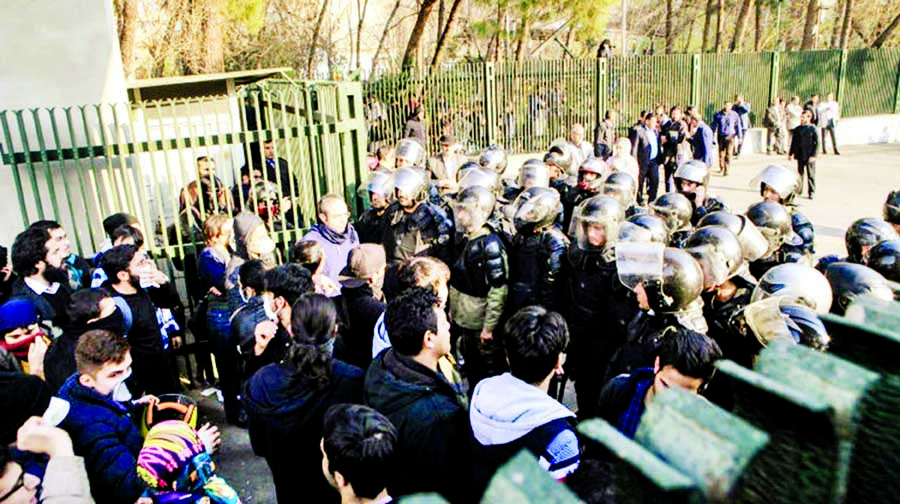
Nine more people have been killed overnight as clashes between protesters and security forces continue in Iran for a sixth day, state media report.
The latest violence, in the central Isfahan region, brought the number of reported deaths to at least 22.
Six protesters died in what was described as an apparent attempt to seize guns from a police station.
Elsewhere, a boy aged 11 and a man were reported killed in clashes along with a member of the Revolutionary Guards. The protests in cities across Iran are the largest since the disputed 2009 presidential election.
They began last Thursday in the city of Mashhad, initially against price rises and corruption, but have since spread amid wider anti-government sentiment.
Hundreds of people have been arrested.
President Hassan Rouhani said protests were an “opportunity, not a threat”, but vowed to crack down on “lawbreakers”. The US has stepped up support for the protesters’ “bold resistance”.
State TV reported that six rioters were killed during an attack on a police station in the town of Qahderijan in the central province of Isfahan. It said clashes were sparked by rioters who had tried to steal guns from the police station. Another one of the dead is said to have been a member of Iran’s Revolutionary Guard, killed in nearby Kahrizsang. State TV also said an 11-year-old boy and a 20-year-old man were killed in the town of Khomeinishahr. Earlier, state media reported shots had been fired at police in Najafabad, near Isfahan, killing one officer and wounding three. The demonstrations started last week in Mashhad, Iran’s second biggest city, and since then have spread.
To begin with they were about the economy, unemployment and inflation. Some protesters have asked why Iran is spending a lot of money on regional conflicts when people are suffering at home. But quickly demonstrations moved on to politics, criticising leading figures in the Islamic Republic and some even calling for a return to the monarchy that was overthrown by revolution in 1979.
This is not a new revolution, but the protests are the biggest in Iran since the disputed presidential election in 2009. This time, though, it seems to be a movement without national leaders. President Rouhani has tried to play it all down. Reformists and conservatives have been blaming each other and foreigners. But the protests show how discontented Iranians are with their lives, increasing poverty, and repression by the regime.

